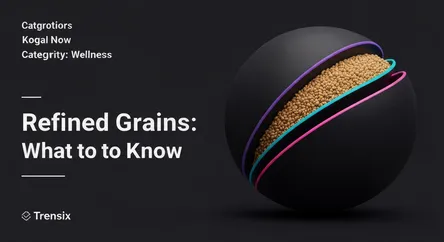Wellness
Refined Grains: What to Know

An explainer on refined grains, why they're a hot topic in nutrition, and how they can affect your health and wellness.
What is it?
Refined grains are grains that have been milled, a process that removes the outer bran and the inner germ layer, leaving only the starchy endosperm. This is done to give grains a finer texture and improve their shelf life. Common examples include white flour, white rice, and most commercial breads, cereals, and pastries. During refinement, important nutrients like dietary fiber, iron, and many B vitamins are removed. Although these grains are often enriched, with some vitamins and iron added back, the fiber is typically not replaced.
Why is it trending?
Refined grains are a trending topic due to a growing global focus on wellness and whole-food diets. Nutrition experts and health organizations frequently advise replacing refined grains with whole grains to improve overall health. This discussion is central to debates around modern diets, which are often high in processed foods made from these grains. As consumers become more ingredient-conscious, understanding the difference between whole and refined grains has become a key part of making informed nutritional choices for disease prevention and weight management.
How does it affect people?
A diet high in refined grains can have several effects on health. Because they lack fiber, they are digested quickly, which can lead to rapid spikes in blood sugar and insulin. Studies have associated high consumption of refined grains with an increased risk for health problems such as obesity, heart disease, and inflammation. In contrast, whole grains are linked to better health outcomes, including a lower risk of stroke, type 2 diabetes, and improved cholesterol levels, largely due to their high fiber content.